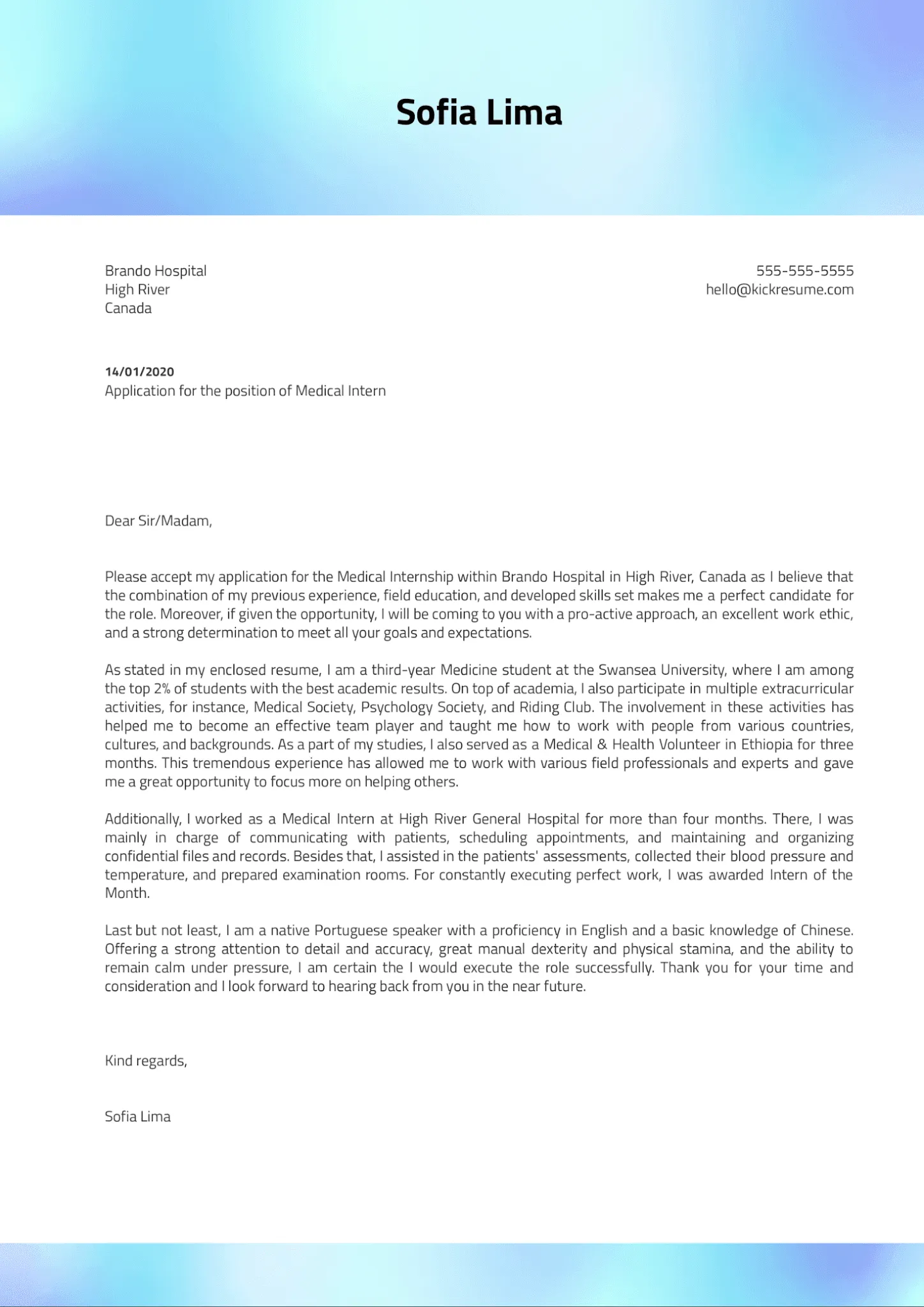Understanding the Medical Residency Cover Letter
The medical residency cover letter serves as your first formal introduction to the residency program selection committee. It’s an essential document that accompanies your application, providing a detailed insight into your qualifications, experiences, and motivations. Unlike your CV, which lists your accomplishments, the cover letter allows you to articulate your story and explain why you’re a strong candidate for their specific program. A well-crafted cover letter can significantly enhance your chances of securing an interview and ultimately, a residency position. It offers a crucial opportunity to make a compelling first impression and demonstrate your genuine interest in the program. This is where you can show your personality and passion for the field.
The Purpose of a Cover Letter
The primary purpose of a medical residency cover letter is to persuade the program directors and selection committee that you are a good fit for their program. It’s your chance to highlight your strengths, showcase your experiences, and explain why you are interested in their specific residency. The letter should communicate your commitment to medicine, your relevant skills, and your understanding of the program’s mission and values. It should also differentiate you from other applicants by providing a personalized narrative that reflects your unique journey and aspirations. Essentially, it’s about making a strong case for why they should choose you. The cover letter demonstrates your ability to communicate effectively, your professionalism, and your enthusiasm for a particular specialty and program.
Key Components of a Strong Cover Letter
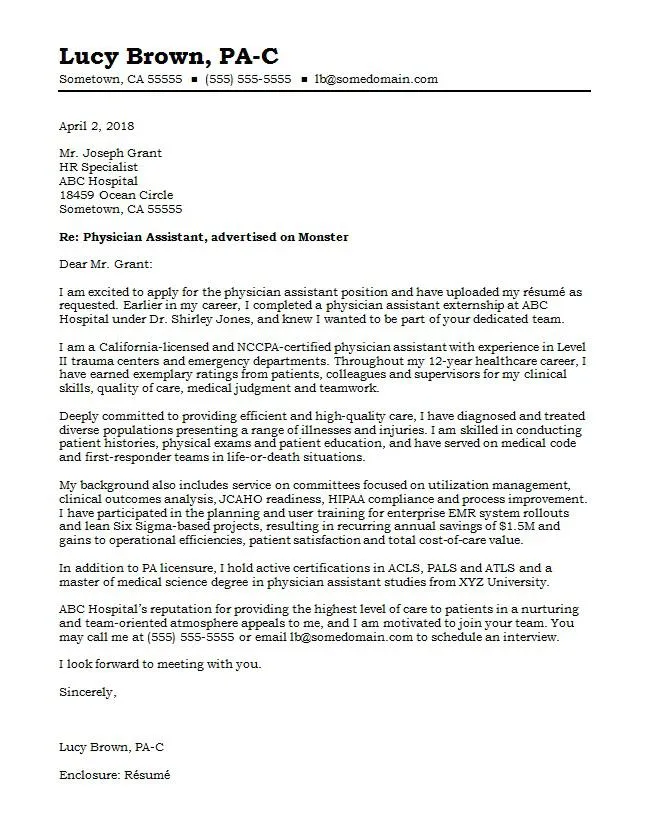
A strong cover letter should include specific key components to effectively present your qualifications. Begin with your contact information and the date, followed by the program’s contact details. The salutation should be professional, addressing the program director or the specific contact person if known. The opening paragraph should immediately capture the reader’s attention by stating your intention to apply and expressing your enthusiasm for the program. In the body of the letter, highlight your qualifications and experiences, including academic achievements, clinical experiences, research, and relevant skills. Demonstrate your interest in the program by explaining why you are a good fit and showcasing your alignment with the program’s values. The closing paragraph should express your gratitude and state your next steps, such as your interest in an interview.
Your Contact Information and the Date
At the top of your cover letter, you should include your contact information, which should be left-aligned. This typically includes your full name, address, phone number, and email address. Ensure your email address is professional. Below your contact information, include the date of the letter. This ensures the program knows when you submitted your application and helps them organize your documents. Accuracy and professionalism here set the tone for the entire letter. This section is crucial for quick and easy access to your contact details.
The Residency Program’s Contact Information
Directly below the date, on the left side, include the residency program’s contact information. This includes the name of the program director or the specific person to whom you are addressing the letter, the program’s name, the department, the hospital or institution, and the full address. If the name of the program director is available, make sure to use it to personalize the letter. If a specific contact person is mentioned in the program’s application guidelines, always address the letter to that individual. This attention to detail demonstrates that you have researched the program thoroughly.
Professional Salutation

Begin your cover letter with a professional salutation. The ideal salutation addresses the program director or the specific contact person, such as “Dear Dr. [Last Name]”. If you don’t know the specific name, use “Dear Program Director” or “Dear Residency Committee”. Avoid generic greetings like “To Whom It May Concern”. This personal touch shows that you have put in the effort to address the letter appropriately. Ensuring proper titles and spellings are important here. It sets a formal and respectful tone from the beginning.
The Opening Paragraph
The opening paragraph should immediately grab the reader’s attention and state your purpose. Clearly and concisely state that you are applying for a residency position in the specific program. Show your enthusiasm for the program and the specialty. You might mention how you learned about the program or what initially drew you to it. Avoid generic statements; instead, show your passion for the field and your understanding of the program’s mission. This section should be brief, but it must capture the program’s attention and make them want to read the rest of your letter.
Highlighting Your Qualifications and Experiences
The body of your cover letter should highlight your qualifications and experiences. This is the section where you provide the most detail about your background. Use specific examples to demonstrate your skills and attributes relevant to the residency. You can break down your experiences into sections, such as academic achievements, clinical experiences, research and publications, and specific skills. This section should be well-organized, easy to read, and clearly connect your past experiences with the requirements and goals of the residency program. It’s crucial to tailor this section to match the program’s specific needs and preferences.
Academic Achievements

Include notable academic achievements in your cover letter. Mention your medical school, graduation year, and any honors or awards you received, like Dean’s List or scholarships. Highlight your GPA if it is particularly strong, especially if it is relevant to the program’s requirements. Emphasize any relevant coursework, such as courses related to the specialty you are applying for. This shows your academic foundation and your dedication to excellence in medicine. Keep this section concise and focused, highlighting the most impressive and relevant achievements.
Clinical Experiences
Discuss your clinical experiences, focusing on rotations and experiences relevant to the residency. Provide details about your hands-on experience and the skills you developed. Mention any leadership roles you had during these experiences. Describe specific procedures you performed or assisted with and the impact on patient care. Showcase any unique opportunities or experiences you have had, such as rotations in specialized areas. Provide quantifiable achievements, such as the number of patients you saw or procedures you assisted with. This shows your practical skills and abilities in a clinical setting.
Research and Publications
Include your research experience and any publications. Mention the research projects you participated in, your role, and the outcome. Highlight any presentations you gave at conferences. If you have published papers, list them, including the journal and date of publication. Research experience is highly valued, so make sure to emphasize the details of the projects and their importance. This part of your cover letter can showcase your analytical skills, scientific curiosity, and your ability to contribute to the medical field through scholarly work.
Skills and Attributes
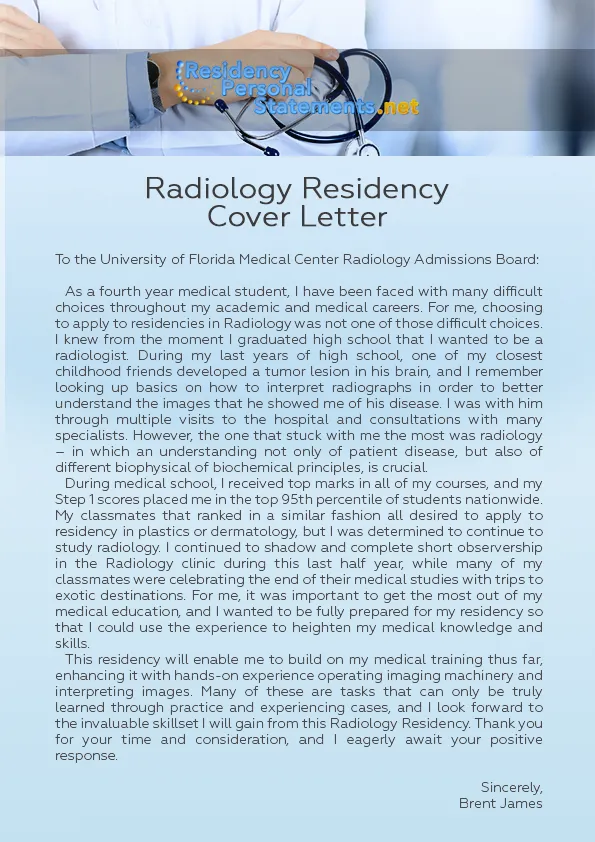
Highlight relevant skills and attributes. Include both technical skills (like proficiency in electronic health records, specific medical procedures) and soft skills (communication, teamwork, leadership). Show how you’ve demonstrated these skills in your previous experiences. Provide examples of how you have resolved conflicts, worked well in a team, or demonstrated leadership. These skills are crucial for residency, so this section is critical. Mention any specific software or equipment with which you are proficient. It is important to show a balance between technical expertise and interpersonal abilities.
Demonstrating Your Interest in the Program
Express your genuine interest in the specific program. Explain why you are interested in this program specifically and not just any residency position. Demonstrate that you have researched the program thoroughly, mentioning its unique aspects, such as specific research opportunities, specializations, or a particular patient population it serves. Connect your goals and experiences with the program’s offerings. This shows that you are committed to the program and have a well-thought-out plan for your career. This section makes the letter unique to the specific program.
Why This Program?
Specify why you are drawn to the program. Highlight the aspects of the program that resonate with you. This could be the program’s focus on research, its strong reputation in a particular specialty, the mentorship opportunities it offers, the patient population it serves, or the location. Show how the program aligns with your career aspirations and your personal values. This information shows the selection committee that you are serious about the program. Avoid generic statements; be specific and provide concrete reasons that you find the program appealing.
Showcasing Your Alignment with the Program’s Values
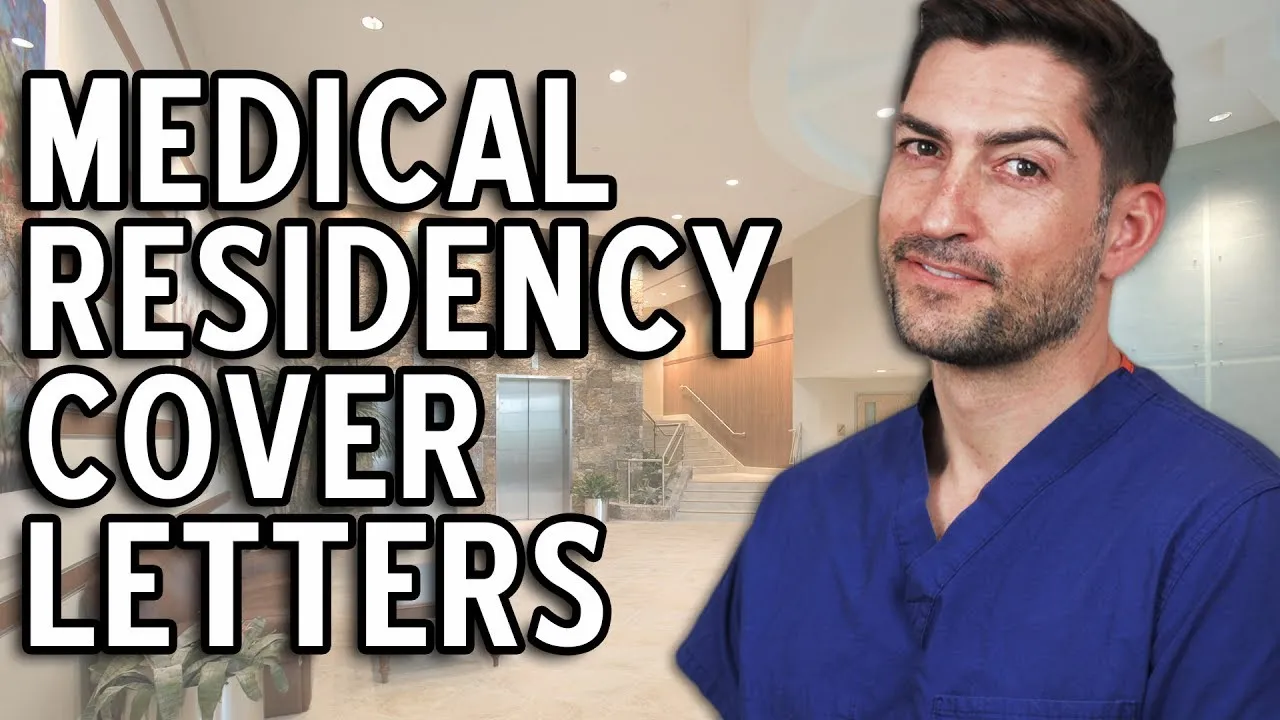
Demonstrate your alignment with the program’s values and mission. Review the program’s website and any mission statements. Discuss the program’s commitment to patient care, community service, research, or medical education. Connect your experiences and values with the program’s goals. For example, if the program emphasizes community outreach, describe your volunteering experience or your interest in serving underserved populations. This section is about making sure the program knows you are a good fit, not just academically, but also in terms of the core values that drive the program. Show how your values reflect your commitment to the profession.
The Closing Paragraph
In the closing paragraph, express your gratitude to the program director and the selection committee for their time and consideration. Reiterate your interest in the program and your enthusiasm for the opportunity. State your willingness to provide additional information or to attend an interview. Include a professional closing, such as “Sincerely” or “Best regards”. End with your full name and your signature (if the letter is printed and mailed). This is your last chance to leave a positive impression.
Expressing Gratitude and Next Steps
Show your appreciation for the opportunity to apply and the time the committee has taken to review your application. Clearly state your interest in an interview, and provide your contact information for their convenience. Thank the program director and the committee for considering your application and for their time. This closing is your final chance to emphasize your commitment to the program and to make a positive impression.
Formatting and Proofreading
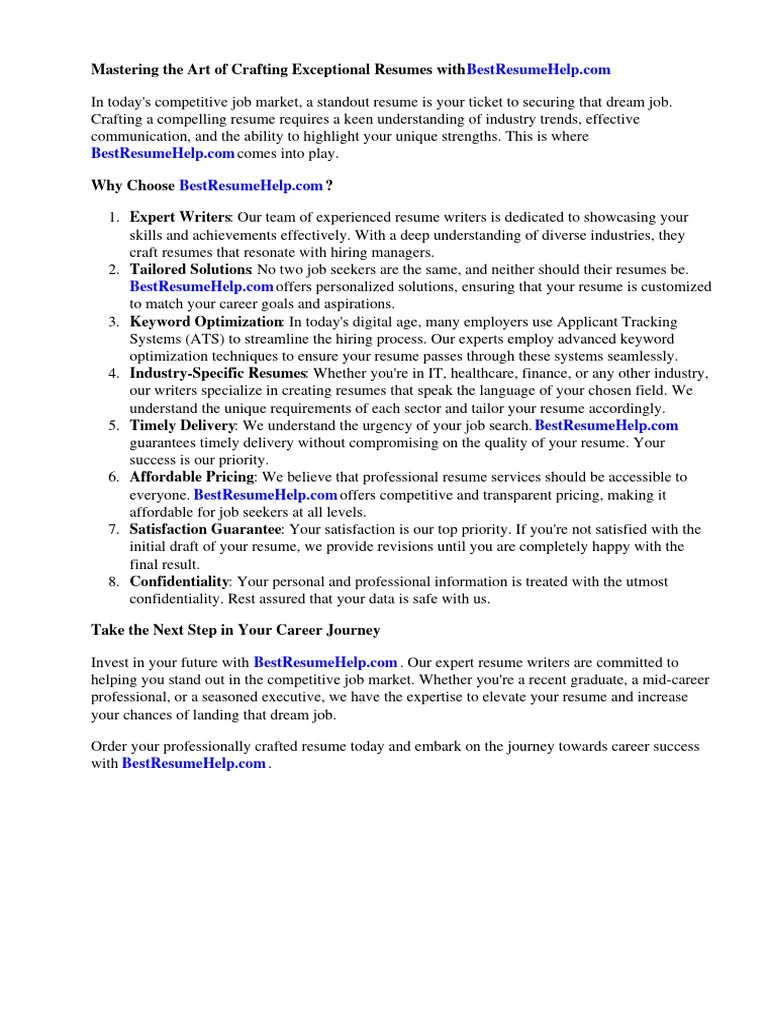
Formatting and proofreading are essential for a professional cover letter. A well-formatted cover letter is easy to read, and it makes a good impression. Use a clear and legible font, such as Times New Roman or Arial, and keep the font size between 11 and 12 points. Ensure that your margins are standard (1 inch on all sides) and that the letter is single-spaced with a double space between paragraphs. Proofread the letter carefully for any spelling, grammar, or punctuation errors. A polished and error-free cover letter shows your attention to detail.
Font and Layout
Choose a professional font and maintain a consistent layout. Use a standard font like Times New Roman, Arial, or Calibri to ensure your letter is readable. Ensure your margins are set at 1 inch on all sides. Use single-spacing within paragraphs and double-spacing between paragraphs. Avoid using excessive bolding, italics, or underlining, and keep the formatting consistent throughout the letter. This ensures a professional and organized look and feel to the letter.
Proofreading for Errors
Proofread your cover letter meticulously. Check for any spelling, grammar, and punctuation errors. Read the letter aloud to catch any awkward phrasing or sentence structure. Have a friend, mentor, or career advisor review the letter. Mistakes can undermine your credibility, so it is important to ensure a clean and error-free document. This ensures that your writing is polished and professional.
